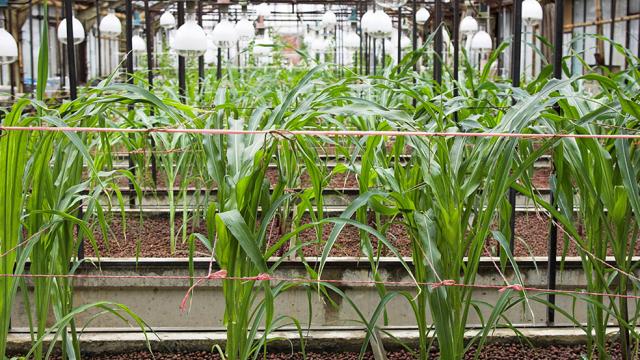A new discovery could take corn farming to perhaps the last place you’d expect to see it: in underground mines and caves. Perhaps, eventually, even to other planets. It sounds like science fiction, but it’s real, and it could drastically change the future of food production as we know it.
It all started when researchers at Purdue University tried growing corn in an abandoned limestone mine. Despite the seemingly non-ideal conditions of the mine (specifically, higher concentrations of carbon dioxide and artificial light), the crops actually thrived. “We coddled the plants with such luxurious conditions that the corn was touching the lamps before it had even tasselled,” then-postdoctoral student Yang Yang said.
So the team tried a technique used to keep holiday poinsettias from growing too large: a blast of cold air. The control group grew at 27C in light and 18C in darkness (simulating day and night); the test group’s conditions were identical except for a two-hour blast of “day” spent at 16C.
The group that experienced the temperature dip produced the same grain yield, but the stalks were 10 per cent shorter and weighed less than the control group. In other words, same amount of corn in less space.
That means that corn — a species that normally requires bright light, lots of heat, and infinite headroom — could grow in cool, cramped areas — you know, like caves. Cary Mitchell, professor of horticulture at Purdue, explains:
“This is a technique you could easily do in a mine or cave. It is an affordable, non-chemical means of taking genetically modified crops to harvest maturity without getting any kind of pollen or seed into the ecosystem.”
In other words, GMO crops for those who want them, without opponents having to worry about modified cross-pollination tainting their heirloom crops.
OK, so corn can grow in caves, and with the right temperature control, it will put out normal yield without bumping its head. But there’s another important implication straight out of science fiction: if we can grow corn in caves and mines, without having to worry about the unintended effects of cross-pollination, we could use genetically-modified crops to produce medicinal products, like antibodies or components for vaccines.
And as Michael Byrne points out, if we can reliably grow corn in closed environments hidden from the sun, maybe we could eventually grow crops in caves on other planets. “In this way, underground farms could one day become terraforming machines, converting high levels of underground carbon dioxide into oxygen, to be released on the surface,” he theorizes.
Someday, you might be eating not just regular corn but cave corn. Or better yet — space corn. [Purdue University via Motherboard]
Picture: Shutterstock/Vasiliy Koval
